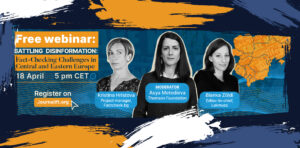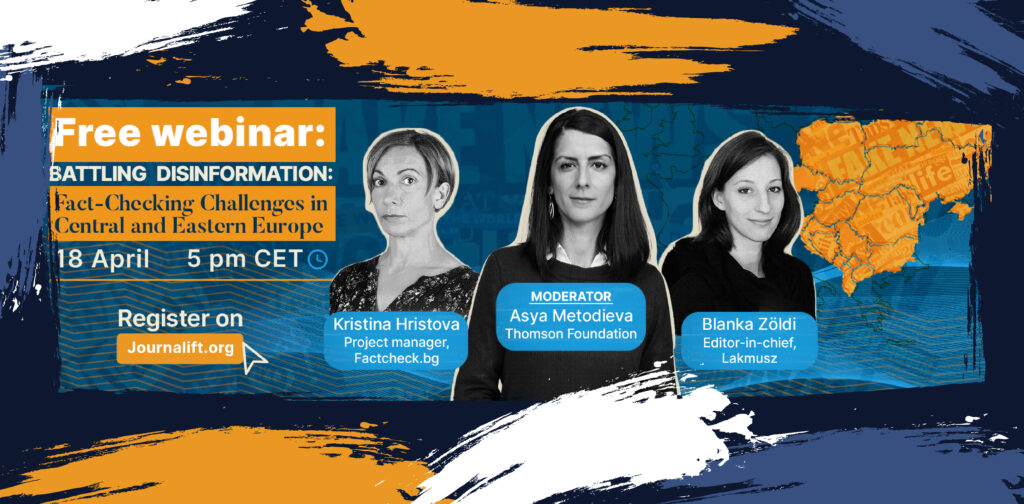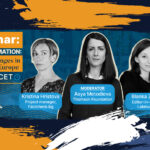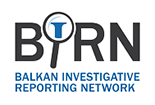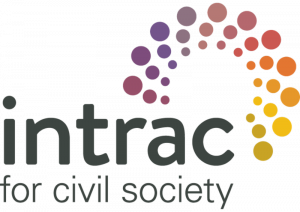The day is February 20, 2014. While we are in the hotel getting ready to go to the field, we are not aware that the events before us will change the face of Ukraine forever. It was the most dangerous day on Maidan, Kiev’s Independence Square, where thousands of people protested the previous three months because of the president’s decision to not sign the Stabilization and Association Agreement with the European Union.
Although they witnessed police brutality many times during the protest, something happened that day that no one could have imagined. Members of the special security forces shot from snipers at the protesters from the tall buildings surrounding the Square. The Ukrainian prosecutor's office later counted 48 killed.
Being in that place as a journalist at that moment was challenging and exciting. Events and information were changing at a high speed, so much so that it was not easy to follow them, let alone check them. The murders on Maidan could be followed live, thanks to direct broadcast on the internet. I remember the disbelief when a German photojournalist, while we were filming the treatment of the injured in the improvised hospital in the Cathedral of Mihail, said that there were dead people on Maidan and that snipers had been spotted. My first instinct was to go check it out, to see it with my own eyes. We rushed to the Square, recorded what we could on the way, but soon followed a phone call from the editor who demanded that we return to safety. When I think about it from this distance, I realize that it was perhaps the first lesson I learned in the field about reporting from crisis situations - because of the adrenaline that overwhelms you, you don't think about the danger.

Another lesson from the experience gained on that same day - while the crisis is ongoing, it is difficult, almost impossible to be sure that the numbers you present are completely accurate. While the conflicts between the special security forces and the protesters on Maidan were taking place, information was coming from many sides and all of it was different. The only thing that we as journalists could do was to convey them while citing the source and clearly emphasizing that this data differs from that presented by, for example, the police, the Ministry of Health, or representatives of Euromaidan, the movement that led the protests. There were also many assumptions, and conspiracy theories about who were the snipers on the roofs were quickly developed. It was up to us to stick to the description of the events we witnessed, the statements of people who were direct participants, and credible sources of information as much as possible. As the conflict flared up in eastern Ukraine, that task of journalists became more and more important.
Disinformation in the role of weapons
The date that marked a complete turning point, the day when, according to Executive Director of the Institute for War and Peace Reporting (IWPR) Antonio Borden, Russia took a crucial step towards becoming "an industrial-scale source of disinformation," occurred on July 17, 2014. Then, in the east of Ukraine, Malaysia Airlines passenger plane MH17, which was flying from Amsterdam to Kuala Lumpur, was shot down by a rocket. All 298 passengers and crew members lost their lives. An investigation led by Danish researchers found that the Russian-made projectile was fired by pro-Russian fighters in Donbass. Eight and a half years later, the same was announced by the Netherlands court, which conducted a trial against the four suspects for shooting down the plane, but the Russian version of the truth was different.
"The big lie is the driver of this catastrophic war built in the realm of competing truths," said Borden describing what followed and what we are still witnessing today.
More than perhaps ever before, it is necessary for journalists to be careful while reporting, because, except the battlefield, battles are also fought daily through the media.
A part of the media houses consciously participates in this, taking sides in the conflict and spreading its propaganda. In the era of social networks, which have become the main source of information for young people, this job is much easier.
"In the digital world, winning the media war is crucial for all sides. Everyone wants to convey their side of the story, so they try to control what we do. Our job is to not let them do that," said the experienced BBC reporter and international editor Jeremy Bowen during a broadcast of the British public service from Kherson. Trying to explain why we know so little about the battle for Kherson, he said that his experience from over 20 wars he covered taught him that in such situations it is always difficult to understand exactly what is happening on the field. In his reports, he tries to convey the atmosphere, the stories of the people he meets on the field, in the destroyed cities where the battle took place, their experiences and challenges. So, he conveys mainly what he witnessed himself, which, in my opinion, is the most important task of a reporter, especially when reporting on sensitive topics, such as a conflict of this scale and the impact it can have.
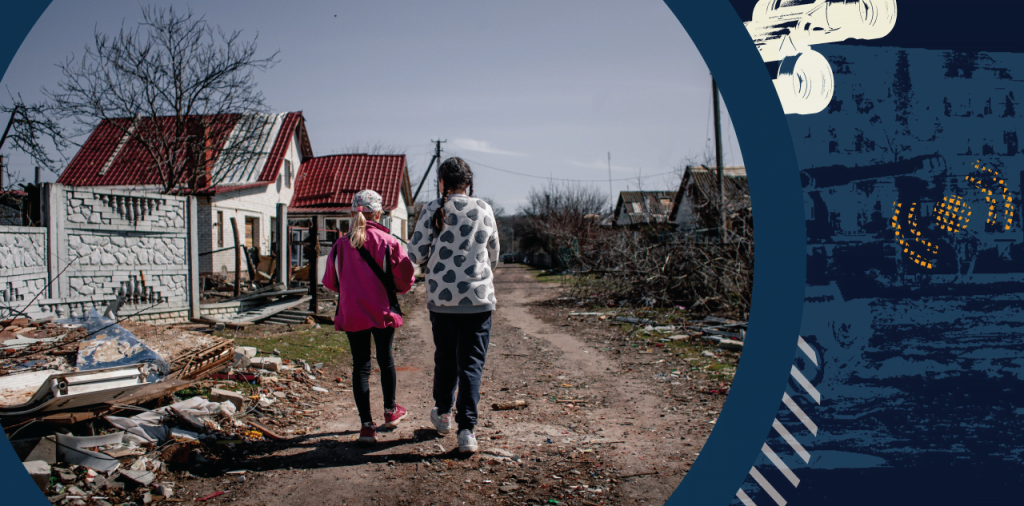
The specificity of the war in Ukraine, when it comes to the media, the way it is reported, that is, the methods used to divert attention and relativize facts from the field, is perhaps best explained by a new trend - arouse suspicion, blur the truth and confuse the audience. This also happened to Jeremy Bowen, whose credibility, supported by decades of professional reporting, they tried to destroy by questioning the authenticity of one of his stories. Namely, on social networks, thousands of users shared an "analysis" of a screenshot taken from Bowen's report from Irpin, a photo in which he is in a lying position in the foreground, while in the background we see a destroyed bridge and a woman with a bag, similar to a market bag. The description of the photo reads: "BBC's Jeremy Bowen pretends to be on the frontline, whilst a woman looks on, seemingly bemused". More than seventeen thousand people retweeted the post, and over seventy-seven thousand liked it.
Such cases have led to another new trend in the media - paying more attention to exposing fake news, malicious posts, misinformation, edited footage and photos. Larger media houses now have employees who exclusively deal with this, and they dedicate entire segments of programs to the so-called fact-checking. In the mentioned case where the target was Jeremy Bowen and the BBC, the channel France 24 made a five-minute analysis in which the journalist compared photos, locations, specific marks on the basis of which it is possible to confirm the authenticity of the footage.
A new level of fake news placement
Social networks brought a new phenomenon, which has become particularly visible in the conflict in Ukraine - anonymous individuals or well-organized groups can easily raise doubts about the validity of any report from the field, even those of traditional media, whose professionalism was rarely brought in question. This puts them in the position of having to prove their innocence; while on the other hand, those who blamed them do not need any arguments to prove that they are right. It's enough to raise suspicion.
In the conflict in Ukraine, this media war is far more complex than the use of only social networks, fake profiles or well-organized groups that spread misinformation. The trend of questioning facts from the field, raising doubts about official reports, is known to the highest officials of the battling parties. A good example of this is Bucha, a place near Kiev, its suburb, in which, after the departure of the Russian soldiers, bodies of murdered men and women with their hands tied were found scattered on the streets of the city. Mass graves and numerous evidences of committed war crimes were found. Russian Foreign Minister Sergei Lavrov presented a different truth about Bucha. He has repeatedly said that the bodies of civilians were actually set up by the Ukrainians as a stage set for the media, and his argument is that there was a gap of two days between the withdrawal of the Russian army from that place and the first reports of the massacre.
At the beginning of August, readers and viewers of major media houses noticed something unusual on social networks. A video or written report, in format, graphics and style, the same as any other report from that house, but with unusual content that represents Russian interests. Some of those posts went viral, and later turn out to be fake. The creators of those fake contents targeted houses like BBC, CNN, DW, the German newspaper Der Spiegel and others, and the fake contents were marketed to their readers, possibly on the basis of cookies that the sites use to track users' habits on the internet. In the text in which they deal with the spreading of fake news Deutsche Welle assesses that it seems that the main goal of spreading such posts is to support the Russian war with misinformation, but also to discredit the media.
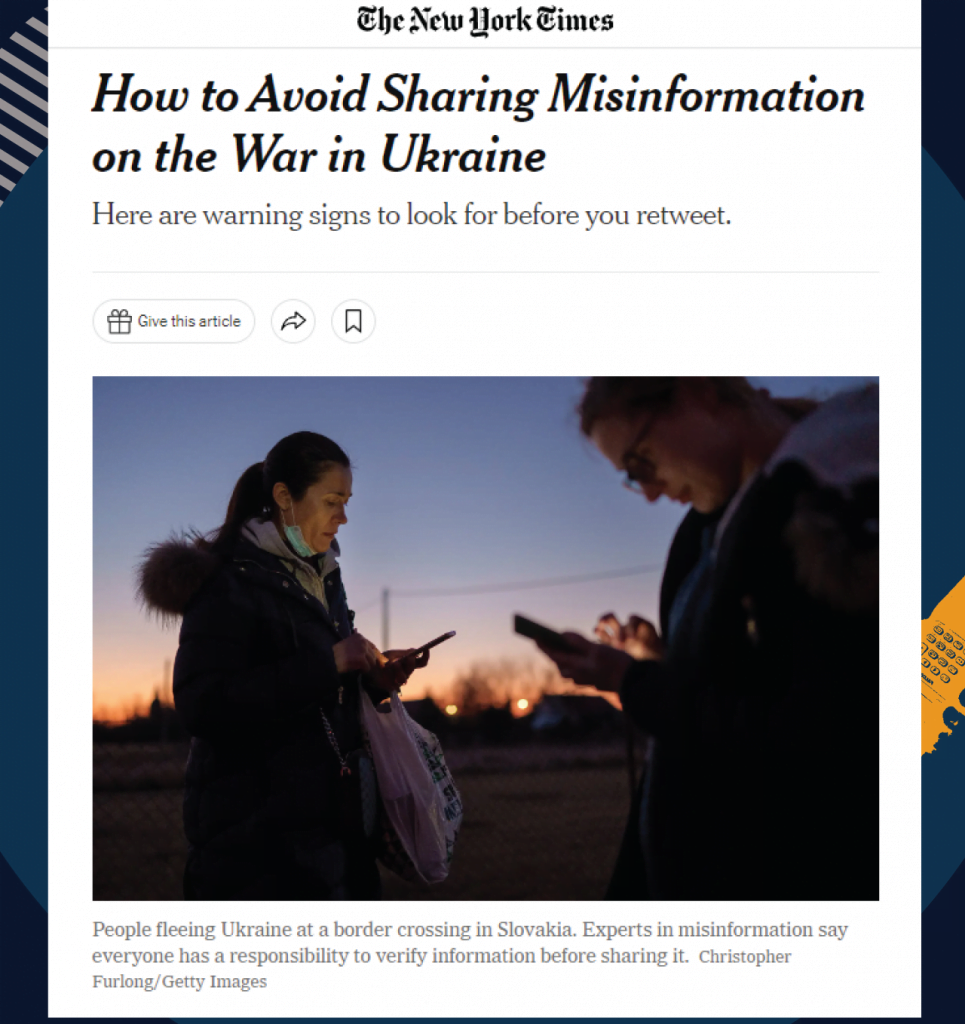
In such climate, apart from often having to deny unknown authors of fake news, journalists and the media have to convince their audience of the correctness of their reporting. In other words, to explain why they should trust them.
Certain media houses, such as the New York Times, have decided to explain the procedure they apply to verify information in their reporting from Ukraine to their readers. On the other hand, The BBC, back in March, published detailed instructions on how to spot and identify fake posts from that country.
First of all, they warn readers that they should pay attention to whether a video is current or with an older day. As examples, they cite footage of the Russian invasion of Crimea or the explosions in Beirut from 2020 that were used to illustrate the current conflict. Signs such as the weather, road markings, the language in which the people in the video communicate can be useful clues, states the BBC. Another important question is who shares them and why, that is, whether it can be considered a credible source of information. Techniques for recognizing and exposing fake news, except for the audience, are also useful tools for journalists in the field.
"Russian spies" - problems for journalists on the field in Ukraine
A colleague from Bosnia and Herzegovina, who was in Kiev at the very beginning of the Russian invasion of that country, only to return in just a few weeks to report from Ukraine, told me about the security challenges they faced on the field. From the understandable ones at the beginning, when they were looking for a way to leave the city in a long line of vehicles, to the completely unexpected ones, when they were stopped by Ukrainian soldiers accusing them of being Russian spies and demanding that they prove that they were not.
Reporting from crisis situations has its specificities and requires good preparation from journalists, but such circumstances, in which special rules prevail, where everyone is suspicious and a possible threat to national security, the situation can easily escalate. Therefore, an important rule would be – have some document that confirms your identity, preferably a document that proves that you had correspondence with representatives of the Ukrainian government or the military, and that you received accreditation or permission from them to enter the country for reporting.
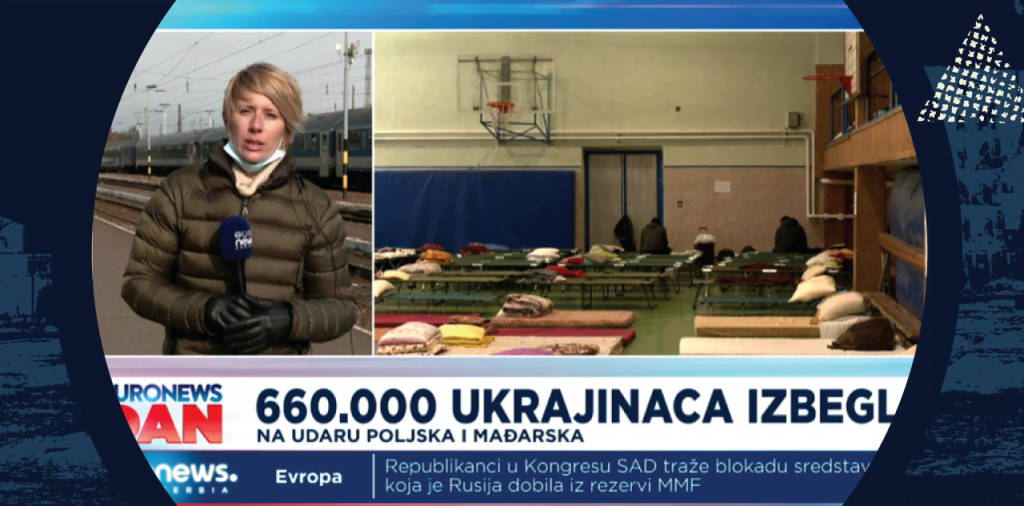
Important remarks from colleagues who traveled to the field in Ukraine are to pay attention to markings on cars. Since the Russian military and those who support it in this war often use the letters Z and V as their symbols, media crews are advised to avoid such markings on their vehicles. Therefore, the inscription TV on the car door is not recommended in this case.
Wearing protective equipment is mandatory. Without it, journalists were not even allowed to cross the Polish-Ukrainian border. A bulletproof vest, preferably marked "press", and a protective helmet - that's the minimum equipment a journalist must have. They won't always have to wear it everywhere, but in a war zone there will definitely be situations when you'll be glad you have them.
Accredited media in Ukraine received clear instructions from the army about what they can and can’t do during the declared state of emergency. For example, on March 3rd, the Supreme Commander of the Ukrainian armed forces issued an order in which he listed objects prohibited for filming and information prohibited for transmission. That order also clarified the procedures for the entry of media representatives into military facilities during the state of emergency. Journalists were told not to film or photograph airports, railway stations, oil facilities, gas pipelines, power plants, military facilities and equipment. They also had an order to be in the city from 10 p.m. to 6 a.m., that is, during curfew. Otherwise, they risk being detained.
The Ukrainian army also issued a list of recommendations to journalists, in which, among other things, it is stated to always carry personal documents with them, including an international press card; to always have cash with them; to dress appropriately and comfortably, because sometimes they will have to blend in with the crowd to avoid standing out and being in danger. The army also advises journalists to never carry a gun or other weapons, and to not wear dark green or other clothing that resembles a uniform. An interesting detail is the advice that they shouldn’t have binoculars or equipment with an antenna, because they risk being suspected of spying. They also invite journalists to be careful when choosing souvenirs, that is, to avoid items that resemble military equipment, documents or weapons. An interesting tip is to behave modestly, to carry a short-wave radio in order to stay informed, as well as a satellite phone that has the ability to send faxes, e-mails and has internet access. The Supreme Commander of the Armed Forces advised the journalists to always have a white flag with them, to carry minimal heavy equipment, to be careful in handling that equipment and to always have a first aid kit with them.
From field experience, a colleague from Zagreb told me how dangerous it was to ignore the warning sirens and, instead of being in a shelter, stay outside for fear of missing something important. "Follow the rules, it can save you. After all, we recorded great stories in the shelter. And that is part of the experience that should be passed on," she said after returning from Kiev and Lviv.
A few more important safety tips - avoid being alone, it is advisable to always move in a group of several people, to know basic information about each other, including blood type, diseases, allergies or therapy, if someone from the group is using it. Before leaving for your trip, prepare well and collect all important phone numbers, contact the embassy of your or another country that you can turn to for help in case of emergency. Check which international organizations are present in the field from which you will be reporting. Make it easier for yourself if you really get into trouble.
Perhaps the most important safety tip would be - train yourself to report from crisis situations. Today, there are numerous courses for journalists, which are often designed and held by former soldiers or members of other security forces. I went through one myself at the television I used to work for. Unfortunately, I passed it only after returning from Kiev in 2014. Many times after that I’d reexamined myself, noticing the mistakes I made on the field out of ignorance. I am referring to behavioral mistakes that could have put me and the team members in serious danger. These are things that you can hardly figure out on your own. And that's why people who once wore uniforms and participated in wars are an excellent source of information. In seven days, they taught us how to distinguish weapons, what their characteristics are, how to move, that is, the most efficient way to escape from snipers or rifles of different ranges. They taught us how to recognize vein and arterial bleeding and how to stop it. Self-help techniques, rules of warfare, equipment that is not difficult to acquire and carry, and which can be crucial in uncertain situations. What kind of projectiles are mostly used and what kind of damage they can cause. When it is smart and when not to use a satellite phone. What in the case of a kidnapping? How to provide first aid to a colleague who is not showing signs of life and other instructions that we would have difficulty finding on our own.
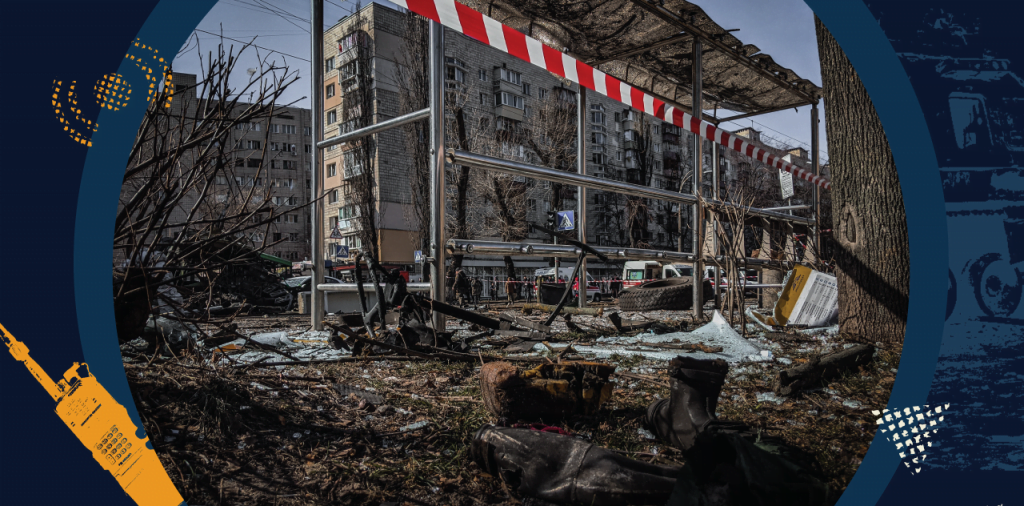
The problem is that only larger media houses generally have the money for such courses. Today, most of the media send their journalists to Ukraine without any training. This group certainly includes freelance journalists and photojournalists who report from the field for various media. Serious media development is necessary in that segment. Data on journalists killed in Ukraine sufficiently indicate this.
In case the media company you work for cannot provide a security course on reporting from crisis situations for journalists and other media personnel traveling to Ukraine, at least find and study free courses offered by various foundations and media organizations. Maybe you won't find "ninja training" like I described, but you will definitely get useful tips that can help.
Storytelling, or telling a story about the face of war
“Put a face on the story.” This is perhaps the first rule of "storytelling", or telling a story in the media, and it is also applicable to sensitive situations such as the Ukrainian conflict.
In addition to the fact that people are more interested in people than numbers or listing information, personal stories help us show the atmosphere and explain the scale and gravity of what is happening. The story of shelled or occupied cities cannot be imagined without people who spent days and nights in shelters, or who manage without drinking water, heating or electricity. Or which soldiers, for example, kept as human shields with the intention of avoiding enemy fire. These are all real examples from the current war in Ukraine.
Therefore, it is important to hear personal experiences. This contributes to the authenticity and better dramatization of the story, but requires a careful and perceptive approach from the journalist. Often when we report from crisis situations, we witness shocking scenes and people who are injured or under stress. If we decide to approach them and ask them a question, that is, if we judge that they are able to give us a rational answer, it is important to be considerate and approach them respectfully and unobtrusively. We record interviewees only with their consent and a clear explanation of where their statement will be published.
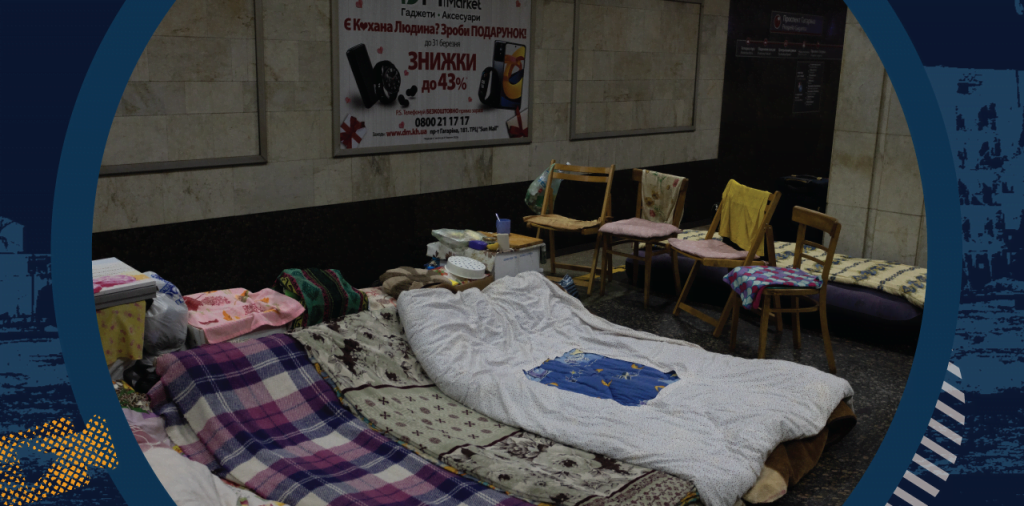
As a rule, explicit scenes of violence, close-up shots of serious injuries or the bodies of those killed are not shown. Although there were debates on that topic. While one side claims that such content does not bring anything good to the viewer/reader, nor to the victim whose dignity may be threatened, the other side's argument is that this is reality and that is why it should be shown. The case that was at the center of the debate was the death of three-year-old Ajlan Kurdi, who died together with his mother and brother and dozens of others when the boat transporting them to the Greek island of Kos turned over and sank. Young Ajlan was a refugee from war-torn Syria and died in the midst of the refugee crisis. The photo of his body washed ashore by the sea posed a key question - are the shocking scenes an unnecessary sensation, or can their publication help citizens (read public opinion) start looking at things in a different way, to see the reality of the horror of a crisis situation? The same question can be asked in the case of the war in Ukraine. Footage from Bucha, lifeless bodies and mass graves - all this is the reality that journalists found on the field. Most of the television house reports I watched contained shots of bodies scattered on the street, but blurred, so that we could only guess what they were showing us, not see clearly. In my opinion, it was a good solution. We received information, a video as proof that Bucha really looks like that, but the reporter still protected us from the traumatic scenes that he, unfortunately, had to see himself. In such situations, the stories of locals who survived the massacre, who were left without homes or close ones, give us an insight into the scale of what happened.
The same rules apply to reporting on marginal, yet unavoidable events related to the conflict, such as the refugee crisis. When waves of Ukrainian refugees headed for neighboring countries, I went to Hungary, Slovakia and Poland with a colleague. For days we recorded similar scenes - thousands of women, children and elderly people crossing the border by car, train or on foot. The pictures were poignant, as were their stories of fear and lived experience. About husbands and other family members who had to stay at home because of the ban on leaving the country for men between the ages of 18 and 65. A lot of media gathered at those locations and we all tried the same thing – to record an authentic picture and hear first-hand what is happening in Ukrainian cities. It was just the beginning of the conflict and everyone was still in shock, since an armed conflict on European soil was not expected in the 21st century.
So much media attention, although necessary in order for the world to see a realistic picture of the scale of the conflict and its consequences, began to resemble sensationalism. In their reports, many colleagues emphasized stressful statements, tears of interviewees, sad and worried children. And that can be also discussed, as in the case of little Ajlan - is making a sensation out of someone's misfortune really necessary, or does the image of thousands of displaced people who packed everything they have in their suitcases and fled to safety speak enough? Another impression from the field, which does not show the media in a good light, was the aggressiveness of some journalists. At the border between Poland and Ukraine, we found dozens of television crews waiting lined up in two rows at the place where whole families were crossing the border on foot. The picture was a bit sickening - while mostly women were dragging suitcases and full bags, leading their children by the hand, journalists approached them, pushed microphones and put cameras in their faces in order to get attractive material. That is completely wrong. Try to imagine yourself in their shoes. In such a situation, would you rather make a statement to a person who does not show that they understand your position, or to someone who will wait for you to stop/sit down, take a breath and then approach you, first alone, without a camera, to talk to you and ask if you would be willing to share your experience?
When it comes to the dilemma of whether to chase a sensation or to act humanely, it doesn't exist for me. Reporting on sensitive groups in such sensitive situations you are obligated to respect their dignity.
Your story will not be any less important or effective, and you will remain at peace with yourself.
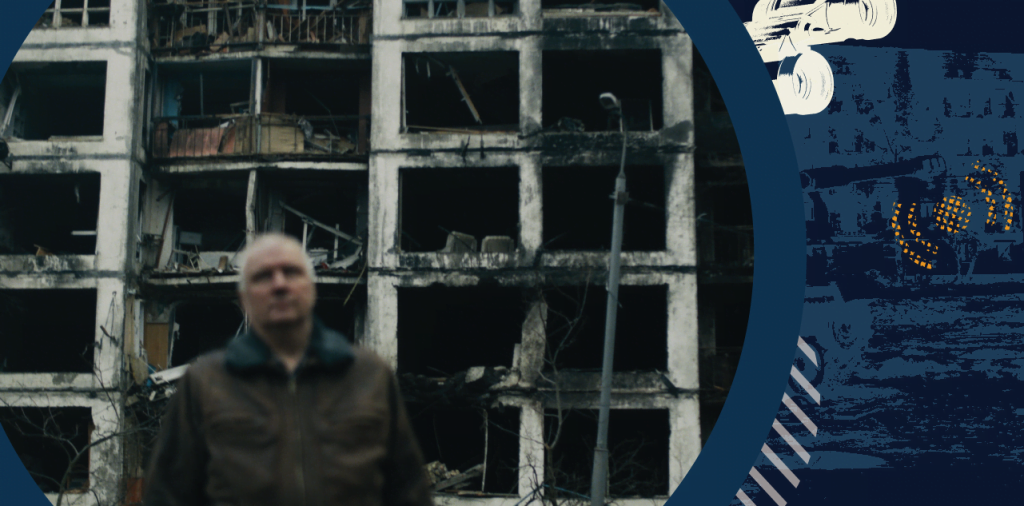
If you're on the field, especially one as challenging as a war zone, show us you're there. Don't avoid stand-ups, on the contrary. It is always interesting for viewers to hear and learn something firsthand, and you are their eyes and ears. Let that stand-up have something to do with the story you are telling us, let it be an integral part of it. For example, if you're talking about living in a shelter after the emergency warning sirens go on, go into that shelter, record yourself doing it, and tell us what the atmosphere is like, whether people are in a hurry or if it's already become a routine for them. If you're talking about the battles that took place in the streets of the suburbs of Kiev, show us the left behind and burned tanks. Stand next to them and explain what happened there. That way, the information you convey will be more impactful and viewers will remember it much longer than if you read it to them as a piece of information in a row.
Good storytelling on television and radio also implies effective use of sound. I mean what we call IT tone, that is, ambient sound or the sound of the environment. Alarm sirens, shelling that can be heard in the distance, shouts - if you witnessed it, use it in the story. Nothing captures the atmosphere from the field better than authentic sound.
Watch your language. Use clear and short sentences. Let your focus be on telling the story, and not on throwing in a lot of information that, without focusing on what is important, will remain misunderstood and quickly forgotten. Let your text complement the image we see on the screen. Don't describe to us what we are watching, but explain to us why we are watching it. Think about the first frame. This is the moment when you keep the viewer or lose them. Let the beginning of the story be striking and let it contain the essence of what you want to tell us in one image. There certainly won’t be a shortage of such scenes in fields like Ukraine.
Don't forget the context. In addition to conveying information about what is happening around them, an important part of a reporter's job is to explain the context, because a good story is one that is understandable. If you can, use maps to clarify where something happened, how far it is, for example, from Kiev or some occupied territory. When you mention the statements or actions of politicians in your report, try to show how they affect the situation on the field, that is, how they are seen by the people whose lives these politicians decide on.
And finally, a reminder of what every good story should achieve - being informed, a deeper understanding of the problem, an incentive to react towards its solution. A well-told story stays in the memory much longer than a retold fact. That is why it is up to journalists and media houses to constantly work on their own development, while adapting to terrain and new circumstances brought by the digital era, but not forgetting their basic task - the protection of public interest and human rights and freedoms.










